by Carter Wilbur
As the U.S. shifts its focus to Great Power Competition (GPC), the relationship between USSOF and embassies worldwide must likewise shift to reflect a whole-of-government approach. In Part 1, I took stock of the current relationship between U.S. embassies and U.S. Special Operations Forces (USSOF), which, while good overall, is too often geared to separate efforts rooted in the counter-terrorism context, where a USSOF unit’s narrow mission against a terrorist cell requires minimal coordination with the embassy’s broader political and economic missions. There are more ways embassies and USSOF can support each other than are currently being realized. The next step is for both sides to develop a more symbiotic, institutional relationship. To that end, I propose five points to guide the development of USSOF-embassy relations, based loosely on the “Five SOF Truths” that have summarized USSOF philosophy since 1987. The Five SOF Truths are:
- Humans Are More Important Than Hardware.
- Quality is Better Than Quantity.
- Special Operations Forces Cannot Be Mass Produced.
- Competent Special Operations Forces Cannot Be Created After Emergencies Occur.
- Most Special Operations Require Non-SOF Assistance.[ii]
The corresponding “Five USSOF-Embassy Truths” I propose are:
- Strong embassy-USSOF relationships are necessary for both organizations to fully succeed.
- Both embassies and USSOF bring unique capabilities and value to the table.
- Establish the embassy-USSOF relationship as early as possible, not in an emergency.
- Each embassy-USSOF relationship will be unique, reflecting local considerations.
- Embassies can offer support capabilities to USSOF.
To distill the idea of embassy-USSOF coordination to five simple bullet points is to ignore the depth of coordination and the effort required to realize the full potential of a true whole-of-government approach, but it provides a starting point for discussions between USSOF and civilian foreign service agencies about how to maximize this relationship.
Strong embassy-USSOF relationships are necessary for both organizations to fully succeed
It’s about the relationships. Embassies and USSOF are both people-centered businesses. Embassies work to build long-standing, open-ended relationships with their host nation counterparts, and likewise USSOF builds relationships with the rest of the U.S. government as well as partner nation and host nation forces to bring its full capabilities to bear on a particular mission. Because USSOF often operates outside of the national capital, whereas embassy personnel are often tied to the embassy, USSOF’s practical on-the-ground insight can be invaluable as to what is really happening in the country. A USSOF element with a good relationship with an ambassador and the wider country team will have the broadest leeway to operate within their legal authorities. In fact, the Marine Corps’ Small Wars Manual from 1940 devotes an entire section to the relationship with the State Department.[iii] Conversely, the less robust that trust is, the narrower permissions the USSOF unit will enjoy; a USSOF element with a bad relationship with the ambassador or host nation counterparts is likely to find itself operating in a much more restricted mode, and perhaps being removed from the country.
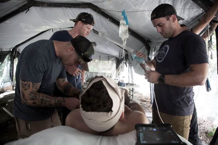
Vignette[iv]: Imagine a U.S. goal to improve medical care in an area particularly vulnerable to terrorist recruitment; the problem is that it is off-limits to embassy personnel precisely because of the terrorist threat there. USSOF, operating with partner nation forces in the area, has more freedom of movement and can provide the embassy with real time, firsthand information about the current situation, needs, and potential partners, drawing on the subject matter expertise of USSOF’s highly trained medical personnel. This enables embassy projects to be better oriented to the community’s real requirements, all while still countering violent extremists as well. This is one example of how embassy and USSOF techniques can foster synergies through coordination and communication.
The United States’ competitors are building relationships with host nations around the world for a wide variety of reasons across the whole range of political, economic, informational, military, and other aspects of national power. [v] For example, Chinese and Russian defense attachés are recruiting host nation officers to their military schools, often in a zero-sum competition with U.S. attachés. Similarly, foreign companies compete against U.S. companies for government and commercial contracts, and foreign schools compete against U.S. universities for host nation students. These competitors leverage coordinated approaches to influence multiple areas at once and respond asymmetrically to U.S. advances in one area through pressure in another, for example increasing state-owned enterprise investment in a country in response to U.S. successes in joint military training. Absent effective coordination, U.S. embassies and USSOF risk not being aware of how their efforts may impact each other, and failing to capitalize on new opportunities opened up by other U.S. efforts.
Both embassies and USSOF bring unique capabilities and value to the table
Beyond an embassy’s subject matter expertise, its relatively small size, compared to the U.S. military’s resources, can actually be a value added proposition, while USSOF can bring resources otherwise unavailable to the embassy. An embassy must focus on what it can do with the resources available, and has core strengths in its deep knowledge of the host nation though its officers, specialists, and local staff. Its relatively flat organizational and communication structure often allows it to break through stovepipes and engage fully across the full range of influence, for instance by using its convening power with the host nation government, with international colleagues, and within the U.S. interagency. Even though USSOF has a smaller footprint than the larger Department of Defense (DOD), the resources it can bring to bear on a particular problem set can still be astounding. This imbalance in resources can also work against it in the interagency setting; if the rest of the U.S. effort doesn’t have adequate project funding or if USSOF sends 10 people versus the embassy’s one to a meeting, the other participants’ contributions can be sidelined to the detriment of a true whole-of -government approach. Embassy officers often have visibility across multiple portfolio topics serving U.S. strategic objectives, and State and USAID’s funding sources may have different constraints than USSOF’s, potentially addressing certain issues for which USSOF has no funding. Additionally, USSOF may bring resources in terms of civil affairs or public outreach capabilities and funding to work in conjunction with existing embassy outreach and development activities.
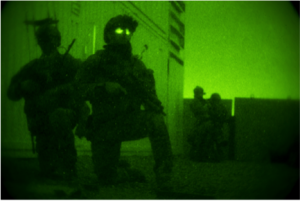
Vignette: Due in part to civilian foreign affairs agencies’ smaller size compared to DOD, Foreign Service Officers (FSOs) usually cover multiple topics; DOD, on the other hand, has the resources (and institutional tendency) to hyper-specialize. With their broader portfolios, FSOs can help DOD units better understand the bigger picture. For example, in Afghanistan, an FSO working across several different topics found a DOD partner in one of those areas had spent six months trying without success to implement a plan to use local contractors instead of U.S.- based contractors to meet local needs, in order to foster Afghan business development. The FSO was able to connect the DOD team with the 200+ person, joint embassy-DOD working group set up specifically to assist in contracting with Afghan firms to build their capacity and got the DOD partner’s program launched in two weeks. Until then, the stovepiped DOD partner hadn’t known of the other group’s existence and hadn’t been able to move forward, but the FSO was able to break through stovepipes and make the necessary introductions.
In past counter-terrorism efforts, embassies needed to be generally aware of what USSOF was doing, without requiring the tactical or even operational specifics. The embassies’ role was usually in strategic level coordination with host nation governments to enable USSOF’s tactical efforts against a decentralized and distributed foe. A new world of great power competition, on the other hand, will require closer coordination at all levels, more agility on both the embassy and USSOF’s part, and better leveraging of each organization’s strengths in order to effectively counter competitors’ strategically directed approaches.
Establish the USSOF-embassy relationship as early as possible, not in an emergency
The old adage “if the first time I talk to you is when I have a problem and I need your help, then I now have two problems” absolutely applies to the embassy-USSOF relationship. A connection established early on will be stronger, having already worked through the initial formation questions. As the U.S. government makes decisions about where to prioritize finite USSOF resources, coordination with relevant embassies must begin early in the process, and persist throughout. Too often plans are developed in a vacuum and presented fully developed. Bringing in broader input early enables the military’s planning assumptions to match up with the rest of the U.S. government’s, and result in synchronized efforts. With resources constrained on the embassy side, the large number of DOD planners can swamp an embassy’s ability to provide meaningful input, so it is important for a USSOF element coming to an embassy to understand the practical limitations in time and personnel that an embassy can allocate to coordinating with them. The success of the relationship should not depend on personalities, such as a specific defense attaché pulling initial assumptions from Geographic Combatant Command (GCC) planners they know and sharing them with the country team. Instead there should be institutional ties where outreach is ingrained on both sides, with realistic expectations of how much time and energy each side can contribute. Earlier coordination is important, and would also maintain the experience of working together built up during the peak Iraq and Afghanistan years.
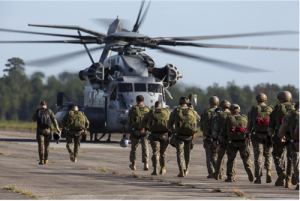
Vignette: There are opportunities today to establish these connections between embassies and USSOF. For example, USSOF members can participate in crisis management planning and exercises as a liaison element, to ensure both sides know each other’s capabilities, expectations, and limitations. While embassies and consulates rarely have the luxury of personnel or travel budgets to send to military commands and conferences, Washington consultations with USSOF coordinators can provide a starting point for information sharing and cooperation. Having the defense attaché identify the right counterparts at relevant commands to engage on planning assumptions early in the process is another simple step that can be taken now.
The United States’ has been committed to counter-terrorism efforts over the past 18 years, and during that time the U.S.’s competitors have expanded their influence in military, political, economic, information, and other areas across the globe. That cannot be undone, but coordinated efforts to best allocate scarce USSOF and Embassy resources can address this situation going forward. Chiefs of Mission should establish clear priorities in their areas of responsibility, and work with U.S. Special Operations Command (SOCOM) and the relevant Theater Special Operations Command (TSOC) to assign limited USSOF resources appropriately. The more both sides understand each other’s capabilities and limitations, the more non-traditional solutions can be developed. For example, if a permanent USSOF presence isn’t feasible due to the broad demands on USSOF worldwide, then increasing the use of training events and other short-term touchpoints can keep the ‘connective tissue’ alive, both with the embassy and with the host nation military counterparts, but this requires embassies to be more savvy consumers of USSOF capabilities.
Each embassy-USSOF relationship will be unique, reflecting local considerations
If you’ve seen one embassy, you’ve seen one embassy; likewise, there are wide variations in USSOF formations’ capabilities and missions. Coordination takes effort, and the scarcest resources are usually time and people. However, the more coordinated U.S. efforts are, the more effectively both the relevant embassy and USSOF formation will be in promoting the specific U.S. objectives in that country and increasing opportunity costs for competitors to implement their objectives there. When an embassy understands a USSOF unit’s specific capabilities, and when USSOF understands the larger U.S. goals there, both benefit. During the civilian surges in Iraq and Afghanistan, both the civilian foreign affairs and USSOF communities worked closely together and developed ‘connective tissue’ between the organizations, but this is at risk of atrophy today as fewer touchpoints between USSOF and embassies exist today. Embassy officers and USSOF should develop at least a minimal awareness of each other’s organizations, how they function, what their respective strengths and weaknesses are, and how the two can work together to most effectively and efficiently achieve U.S. foreign policy goals. Increased mutual awareness in each organization’s respective training cycles would enable that relationship in the field to form more quickly. A solid foundation in USSOF and embassy equities should include understanding each other’s capabilities and missions; lines of communication, command and control, logistics, and information sharing; and how their respective authorities and permissions work, including under what enabling legislation USSOF will operate and what degree of Chief of Mission or Department of State consent, consultation, coordination, and/or notification is required. Without distracting from each organization’s core mission, both embassies and USSOF can train on developing new areas of cooperation in the world of great power competition that weren’t relevant to the counter-terrorism arena.
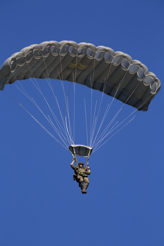
Vignette: Imagine a USSOF element which coordinates with the embassy during its initial mission development planning phase, months in advance of arrival. This requires both effort by the USSOF element to reach out, and from the embassy to answer, but the USSOF unit learns of a near-peer competitor’s activities in the vicinity of the host nation Army base where they will be training. In conjunction with the embassy’s Political/Economic Section and properly authorized through the USSOF unit’s higher command levels, the USSOF unit reports their observations of this third-country competitor’s political and economic activities, enabling the whole U.S. effort to better understand these activities and determine the degree to which they run counter to present or future U.S. interests. Thus, the embassy informs USSOF planners about the unique local considerations of the host nation and third-party states’ interests, and the USSOF unit uses its unique access to convey observations of third-party-state activities back to the embassy in addition to their work training and partnering with the host nation’s military.
This is not to say that coordination and synchronization meetings are the answer to everything, but in a world of limited budget resources putting the right effort in to maximize positive effects will be worth the investment. While each entity may sometimes operate independently, better coordination can make them more aware of each other’s specific missions and capabilities. In cases where they are operating independently, the USSOF element may well have members embedded in the embassy as a liaison element, ensuring steady communication and coordination, or conversely, a civilian foreign affairs officer may be detailed to the USSOF unit for a particular purpose, along the lines of the Provincial Reconstruction Teams in Iraq or Afghanistan. It will simply depend on each situation and the relationship between the USSOF element and the embassy to determine what degree of coordination has the maximum payoff.
Embassies can offer unique support capabilities to USSOF
“You don’t know what you don’t know,” and in my experience, both USSOF elements and the relevant embassies have been very surprised to learn exactly what the other can (and also can’t) do for them. USSOF typically thinks of the fifth “SOF Truth” as meaning they reach back to their respective service – Marine Corps special operations forces to the conventional Marine Corps, Green Berets and Rangers to the conventional Army, etc. U.S. embassies could also fill specific support roles in certain circumstances, such as helping USSOF select the best logistics solution, for example.
Vignette: Imagine a USSOF element, deployed to partner with and train a host nation military, which assesses a need to improve a small arms training facility there. The USSOF unit tries to negotiate with local contractors but the language barrier and local business practices absorb a disproportionate amount of the USSOF team’s time, so they turn to the U.S. embassy’s procurement section to manage the contracting. Working through the management officer, an appropriate charge[vi] for the procurement team’s time is worked out, and DOD funds are transferred to the embassy. The embassy executes the contract, and the USSOF team can spend its time doing what it does best, training partner forces. This is the converse of the first vignette, where USSOF supports embassy efforts in a non-permissive area. Another example is in the military’s information operations efforts, which can find synergies with an embassy’s public affairs section in their messaging, drawing on the section’s local expertise to understand how best to communicate with the desired audience. Effective, properly coordinated, and mutually reinforcing messaging is another example of how these separate and distinct efforts can produce a larger effect than the sum of its parts.
Conclusion
Embassies and USSOF should be mutual force multipliers, each with unique capabilities which can support the other. Early communication of capabilities and expectations can establish surprising new avenues for cooperation. While it isn’t a silver bullet, improved embassy-USSOF engagement and openness to innovative ways to support each other can pay dividends. With both embassy and Defense Department budgets flattening out in the foreseeable future, neither USSOF nor embassies can afford to be less coordinated than our competitors across the whole spectrum of national power to maximize the efficient use of resources.![]()
I would like to thank Ambassadors Greta Holtz and Henry Ensher, fellow POLADs Linda Specht and Jan Levin, and Major Paul Bailey and Captain Tyler Kistner for their input into this project.
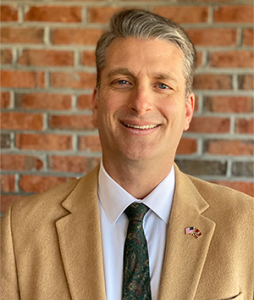
Carter Wilbur is a State Department Foreign Service Officer, currently serving as the Foreign Policy Advisor (POLAD) to the Commander, U.S. Marine Corps Forces Special Operations Command (MARSOC). The views expressed in this article are those of the author and are not an official policy or position of the Department of State or the U.S. Government.
Notes
[ii] https://www.socom.mil/about/sof-truths: U.S. Army Colonel (Ret) John Collins first crafted his “Special Operations Forces (SOF) Truths” in a 1987 Congressional Research Service (CRS) report.
[iii] USMC Small Wars Manual, 1940, Chapter I, Section IV.
[iv] The vignettes used in this article are hypothetical situations, meant to illustrate potential applications of the principle under discussion.
[v] The U.S. military uses the acronym DIMEFIL – Diplomatic, Information, Military, Economic, Financial, Intelligence, and Law Enforcement.- to convey the broadest possible range of how national power can be used.
[vi] For example, through the International Cooperative Administrative Support Services (ICASS) program, which is how a U.S. Embassy allocates the cost of common administrative support at Embassies across different agencies.
